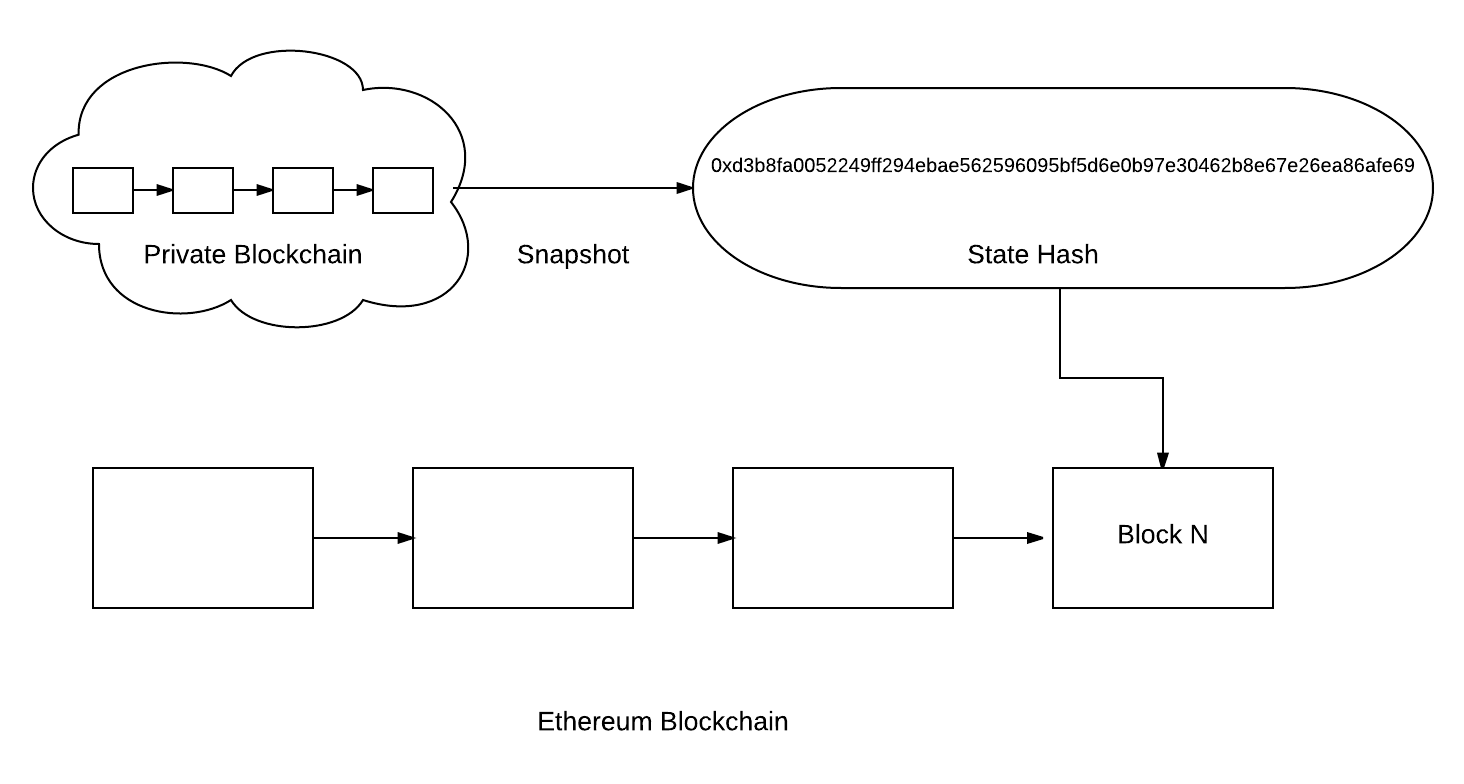blockchainer v0.0.1
blockchainer
A simple command line tool to checkpoint your blockchain's state on another blockchain.
Blockchainer takes your blockchain's state snapshot and imprints it on a higher level chain.
State Snapshots
Any database or Ethereum-based blockchain can have its state snapshotted by taking a hash on the formatted data. In the case of Ethereum-based blockchains, this hash can be saved along with a block number and used to prove that a set of data is consistent with the current history of the blockchain.

This lends credibility to the private blockchain because its history can be proven to have existed at a certain point in time (enforced by the trust in the public Ethereum blockchain).
Parity creates state snapshots by default when your node syncs (snapshots taken by default every 30,000 blocks). It stores a hash and a block number corresponding to these snapshots in a MANIFEST file. For more information, see this page. Blockchainer references this MANIFEST and imprints the state hash and block number onto a higher level chain (usually public Ethereum, but configurable). As of now, Parity is the only client that takes state snapshots, so it is a requirement to run blockchainer.
Steps to configure
The following information needs to be captured in config.json:
- Create a 12-24 BIP39 mnemonic phrase (generator here) and save this as
MNEMONIC - Determine your
GAS_PRICEandGAS_LIMIT- I recommend0x5F5E100and0x7A120, respectively. - Find where Parity stores blockchain data on your machine (details here) and save this as
PARITY_DIR. On mac, this should be~/Library/Application\ Support/io.parity.ethereum/ - Determine the name of the chain you are using for Parity. For more information, see this article. Note that for testing, if you have a node running on the public net you can use
ethereum. - Identify your gateway to the higher level network. For production, I recommend using INFURA. For local development, I recommend Ganache, which manifests itself as
http://localhost:7545. Save this variable asPUBLIC_HOST. - Deploy the contract in
contracts/Checkpoint.solwithtruffle migrate. Get the address of this contract and save it asCONTRACT.
Your config.json file should look like this:
{
"PUBLIC_HOST": "http://localhost:7545",
"CONTRACT": "0xf12b5dd4ead5f743c6baa640b0216200e89b60da",
"MNEMONIC": "candy maple cake sugar pudding cream honey rich smooth crumble sweet treat",
"PARITY_DIR": "~/Library/Application Support/io.parity.ethereum",
"CHAIN_NAME": "ethereum",
"GAS_PRICE": "0x5F5E100",
"GAS_LIMIT": "0x7A120"
}Running blockchainer
With the configuration set, you're ready to start blockchainer with the following command:
blockchainer run <interval> <chainId>Where <interval> is the number of seconds between checkpoints and <chainId> can be anything you want. Typically this would be the identifier that goes along with your blockchain (each private chain will have its own chainId, which you can find in web3.version.network), but there are no restrictions so you can leave this as 0 if you want. For more information on chainIds, see here).